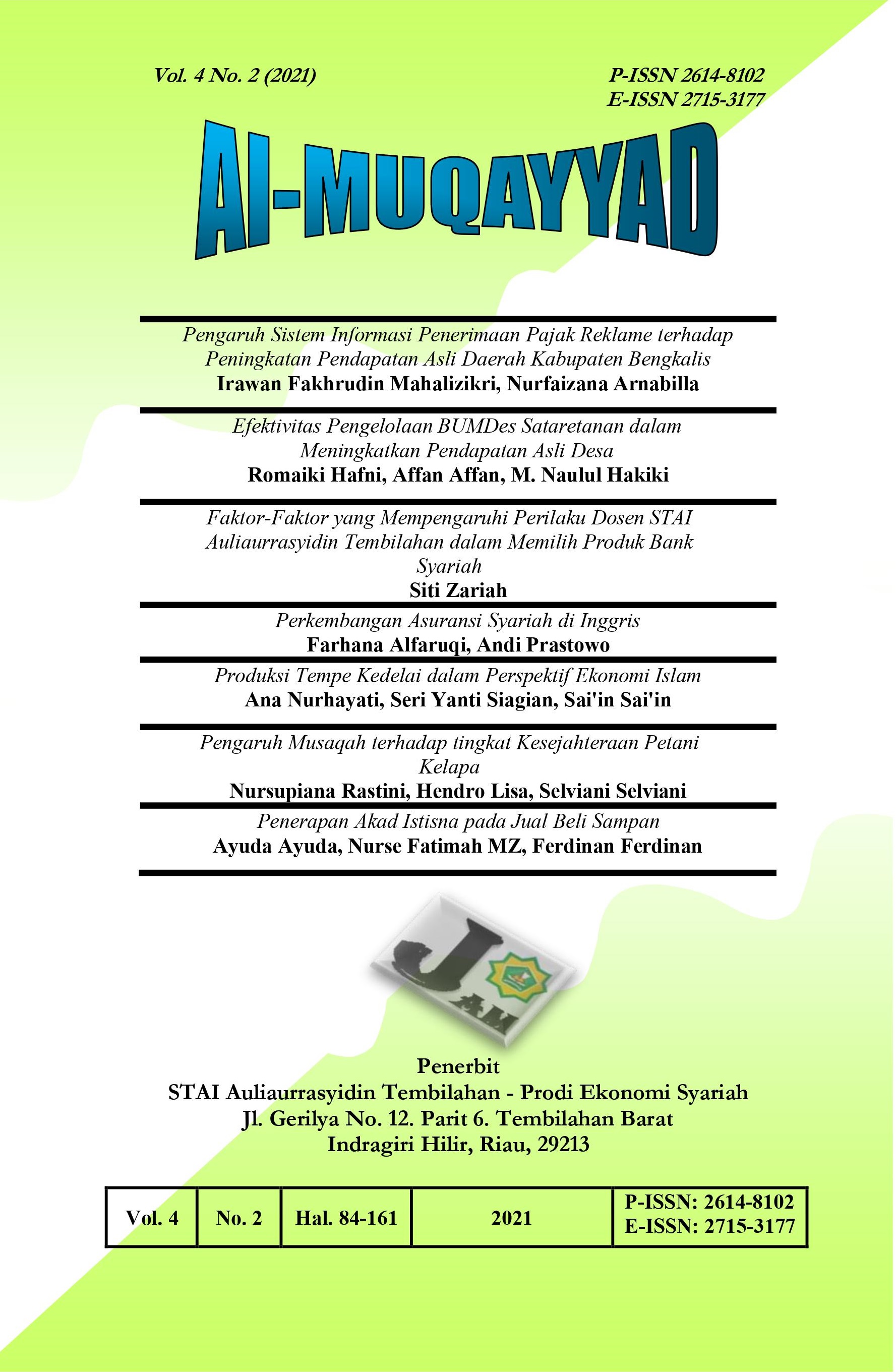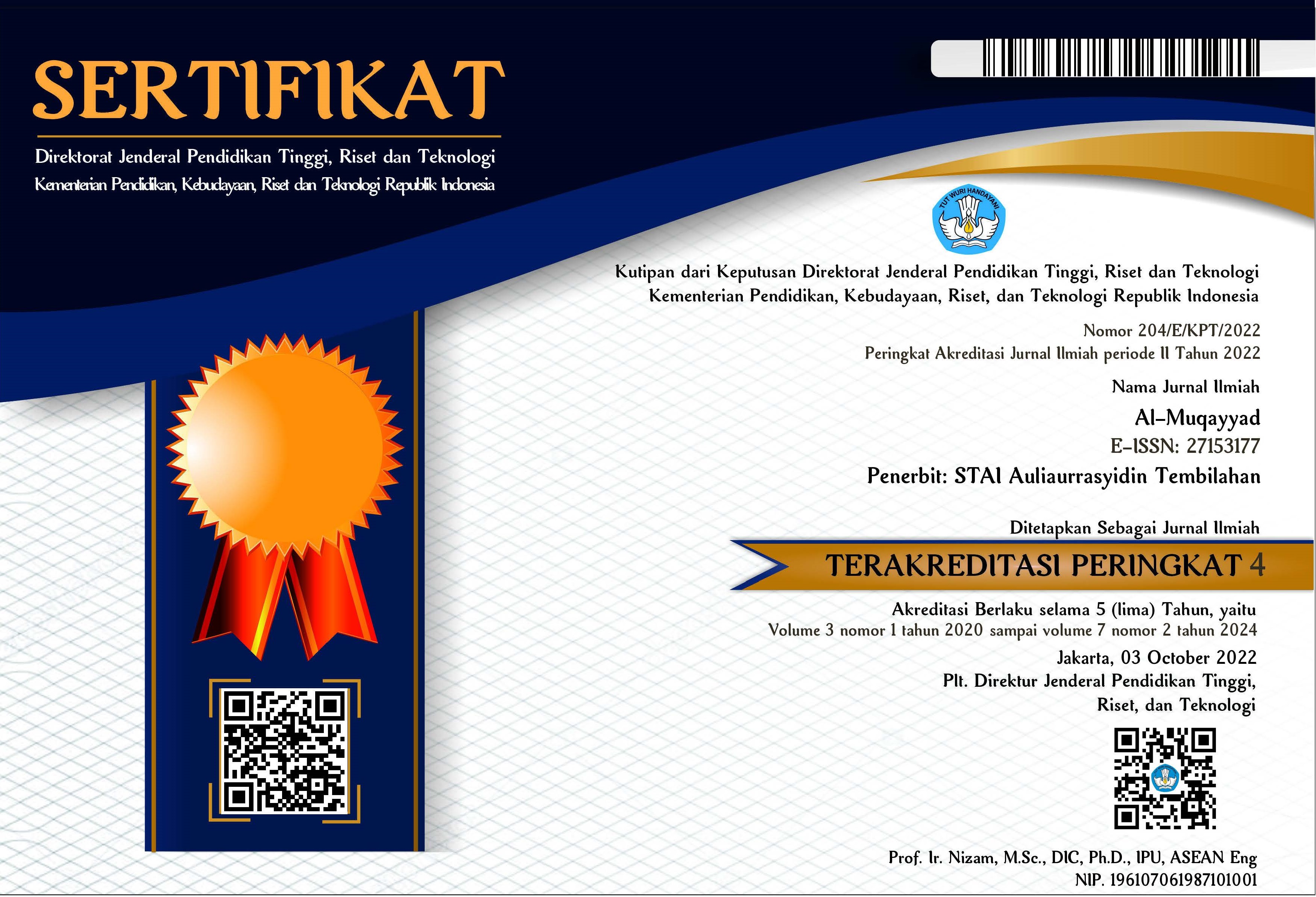Penerapan Akad Istisna pada Jual Beli Sampan
DOI:
https://doi.org/10.46963/jam.v4i2.479Keywords:
Istishna Contract, Buying and Selling, CanoeAbstract
People often have buying and selling carried out to obtain convenience, without knowing whether buying and selling is in accordance with or contrary to Islamic teachings. As happened in the practice of buying and selling istishna. This study aims to determine the application of the Istisna contract in the sale and purchase of canoes in Simpang Gaung Village, Guang District, Indragiri Hilir Regency. The research is field research using qualitative methods. The system of buying and selling canoes in Simpang Gaung Village is partly in accordance with the istisna contract. Meanwhile, seen in the application of the contract, the istisna contract has not been implemented properly, especially in the agreement on the contract and the supply of goods. So, it can be concluded that the sale and purchase of canoes at the Echo intersection are still not in accordance with the istisna contract
Downloads
References
Abdul Azis Dahlan. (1996). Ensiklopedi Hukum Islam, Cetakan.1, Jakarta: Ichtiar Baru Van Hoeve.
Agama, D. (2000). Al-Qur'an dan Terjemanhannya. Bandung: CV. Ponegoro.
Hidayat, E. (2015). Fiqih jual Beli. Bandung: PT. Remaja Rosdakarya.
Imam Mustofa. (2016). Fiqih Muamalah Kontemporer, Jakarta: PT Raja Grafindo Persada.
Lexy, J. (2015). Metode Penelitian Kualitatif. Bandung: Remaja Rosdakarya.
Moh. Mukhsinin Syu'aibi, I. (2019). Implementasi Jual Beli Akad Isthisna Dikonveksi Duta Collection's yayasan Darut Taqwa Sengonagung. Ekonomi Islam, 142.
Mustofa, I. (2016). Fiqih Muamalah kontemporer. Jakarta: PT. Raja Grafindo Persada.
Sugiyono. (2016). Metode Penelitian Manajemen. Bandung: Alfabeta.
Yusuf, A. M. (2019). Metode Penelitian Kualitatif, Kuantitatif, dan Penelitian Gabungan. Jakarta: Pranada Media.
Downloads
Published
Issue
Section
License
Authors who publish with this journal agree to the following terms:
1. Copyright on any article is retained by the author(s).
2. The author grants the journal, right of first publication with the work simultaneously licensed under a Creative Commons Attribution shareAlike 4.0 International License that allows others to share the work with an acknowledgment of the work’s authorship and initial publication in this journal.
3. Authors are able to enter into separate, additional contractual arrangements for the non-exclusive distribution of the journal’s published version of the work (e.g., post it to an institutional repository or publish it in a book), with an acknowledgment of its initial publication in this journal.
4. Authors are permitted and encouraged to post their work online (e.g., in institutional repositories or on their website) prior to and during the submission process, as it can lead to productive exchanges, as well as earlier and greater citation of published work.
5. The article and any associated published material is distributed under the Creative Commons Attribution-ShareAlike 4.0 International License





2.png)



